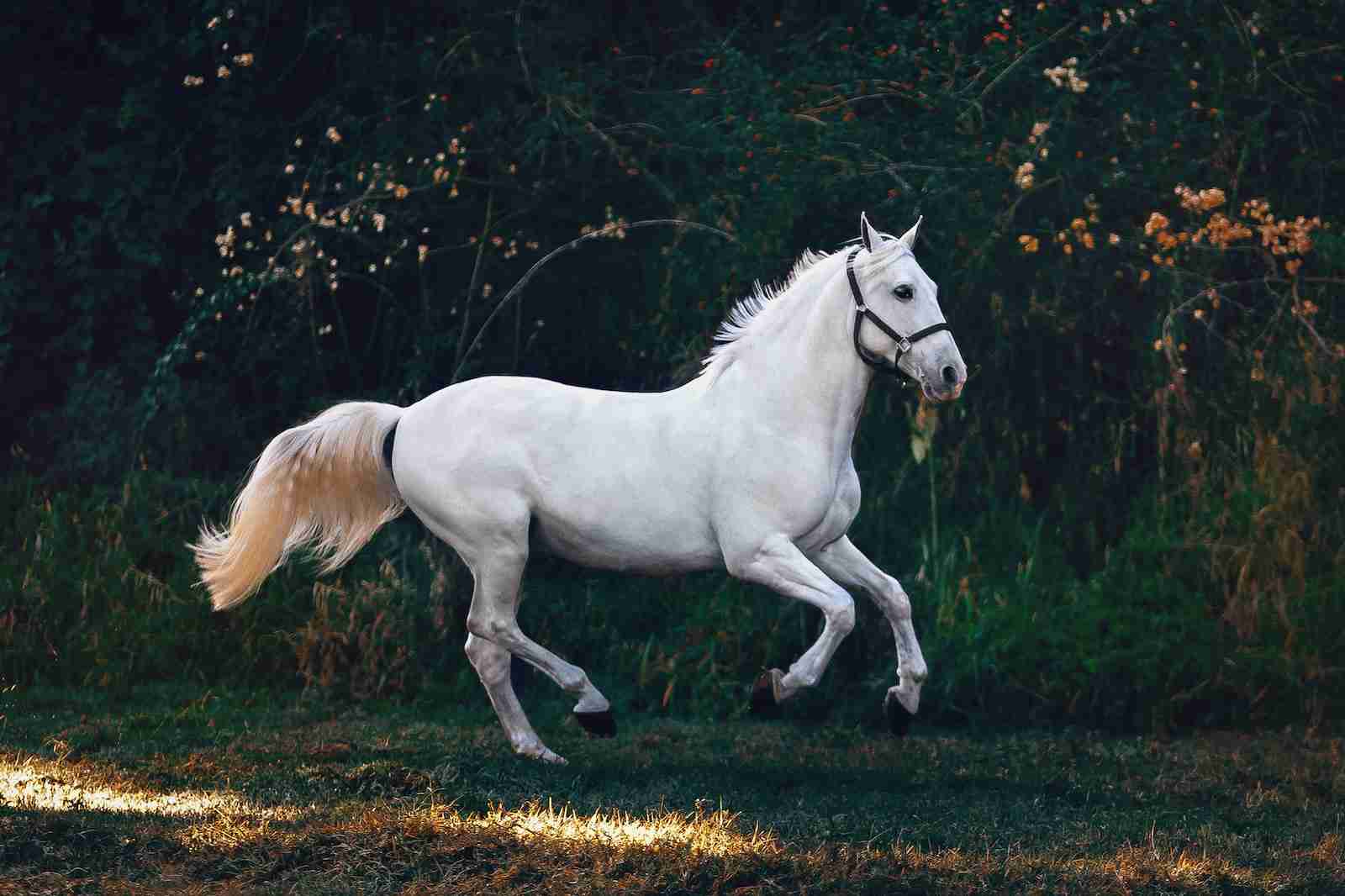25 Fun Facts About Horses: Things You Never Imagined
1. A horse’s teeth take up more space in their head than their brain.
In horses, the space taken up by their teeth, which total up to 40 in number, is more than that of their brain.
This anatomical feature is adapted to effectively grind and process large amounts of plant material for their diet.
2. Horses can run within hours after birth.
Newborn horses, or foals, have the ability to run within hours after birth. This early mobility is essential for their survival, enabling them to quickly escape from predators.
3. The Przewalski’s horse is the only truly wild horse species still in existence.
The Przewalski’s horse holds a unique title as the only truly wild horse species alive today. Unlike other horses, it has never been domesticated, living in its natural habitat in Mongolia.
Its existence is a living link to the ancient horses that once roamed the Earth freely.
4. No two horses have identical stripes.
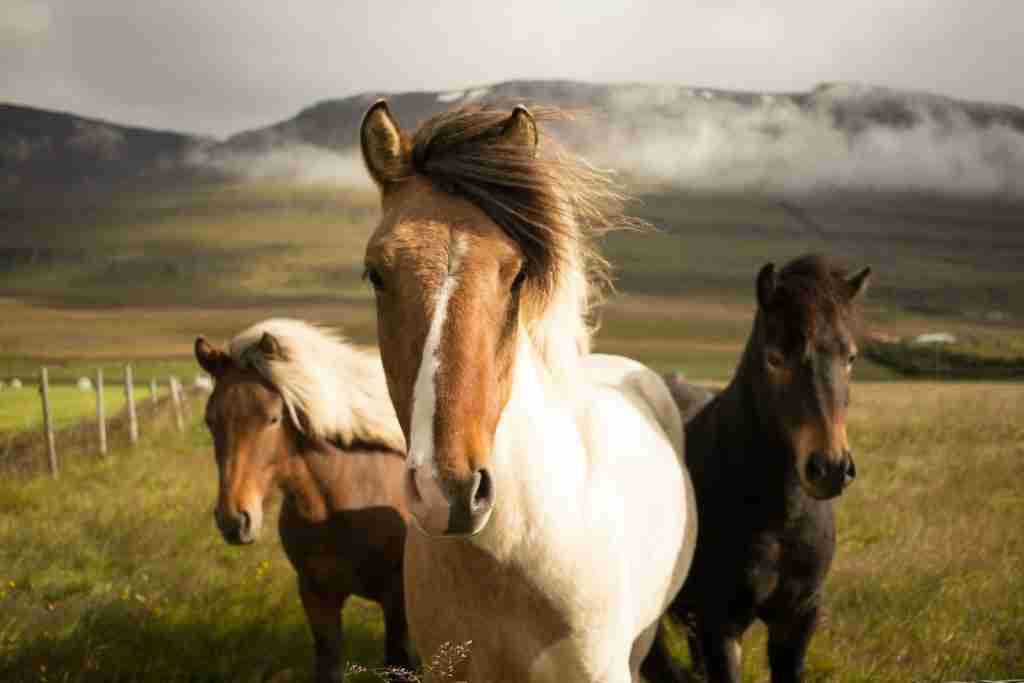
Just like human fingerprints, no two horses have the same stripes. This unique characteristic makes each horse distinct in its own way.
The variation in stripes contributes to their individual identity and adds to their natural beauty.
5. Horses use their ears, eyes, and nostrils to express emotions.
Horses communicate their feelings using their body parts. They move their ears, eyes, mouth, and nostrils to show different emotions.
Observing these movements can provide insights into a horse’s mood and feelings, aiding in better understanding and care for the animal.
6. A horse’s hoof grows at an approximate rate of one centimeter a month.
A horse’s hoof grows slowly, around one centimeter a month. This gradual growth allows for the hoof to maintain its sturdy structure, ensuring it can withstand the horse’s weight and movement.
Regular trimming and care are essential to keep the hooves healthy and strong.
7. Horses have 16 muscles in each ear.
Each ear of a horse is controlled by 16 muscles. This high number of muscles allows horses to rotate their ears 180 degrees.
With this ability, horses can easily pick up sounds from different directions, enhancing their awareness of the surroundings.
8. Horses can sleep both standing up and lying down.
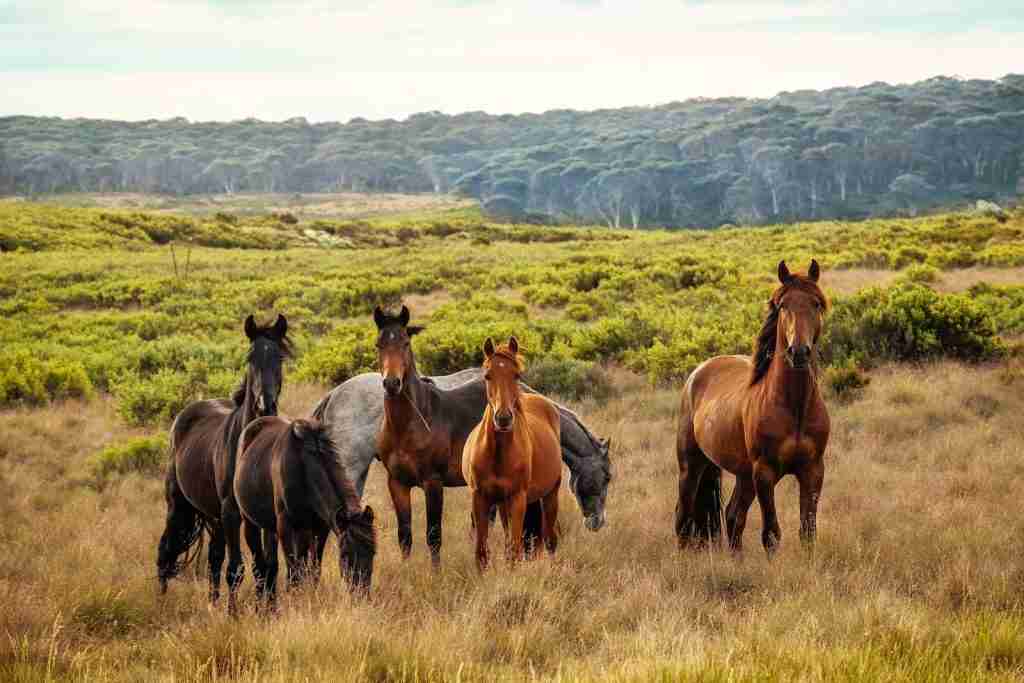
Horses have a unique ability to sleep in standing and lying down positions. Standing sleep is possible due to a special locking mechanism in their legs.
However, they achieve deep REM sleep only when lying down, making it essential for them to rest in both ways.
9. Some horses can grow a mustache.
Believe it or not, some horses can grow a mustache. This rare trait is primarily seen in a breed called the Gypsy Vanner.
These horses may sport a visible mustache, making them stand out and adding to their distinctive appearance.
10. The fastest recorded sprinting speed of a horse is 55 mph.
The top recorded speed of a horse is a breathtaking 55 mph. This incredible speed was reached by a Thoroughbred, showing the powerful and agile nature of horses that have been bred for racing, making them some of the fastest animals on land.
11. Horses have been domesticated for over 5000 years.
Horses have been partners with humans for over 5000 years. They’ve played essential roles in transportation, agriculture, and warfare throughout history, making them one of the most influential animals in human civilization.
12. There are more than 300 breeds of horses in the world.
There are over 300 different horse breeds worldwide. Each breed has its own special traits, sizes, and colors. From tiny ponies to large draft horses, the diversity is wide, offering different capabilities and uses.
13. The Akhal-Teke horse breed has a metallic shine to its coat.
The Akhal-Teke horse breed is known for its unique metallic shine to its coat. This beautiful sheen makes them look like they are made of gold or silver, giving them a magical appearance and setting them apart from other breeds.
14. A horse typically drinks 25 to 55 liters of water a day.
A horse drinks quite a lot of water daily, typically between 25 to 55 liters. This hydration helps in digestion and maintaining their body temperature, ensuring they stay healthy and energetic for their daily activities and tasks. Proper water intake is crucial for their well-being.
15. Horses can’t vomit.
A horse’s digestive setup has three distinct parts that only allow food to move one way – forward.
This design means horses are physically unable to vomit. It underscores the need for a well-managed, easily digestible diet to steer clear of digestive issues.
16. A horse can typically run for about 2-2.5 miles without resting.
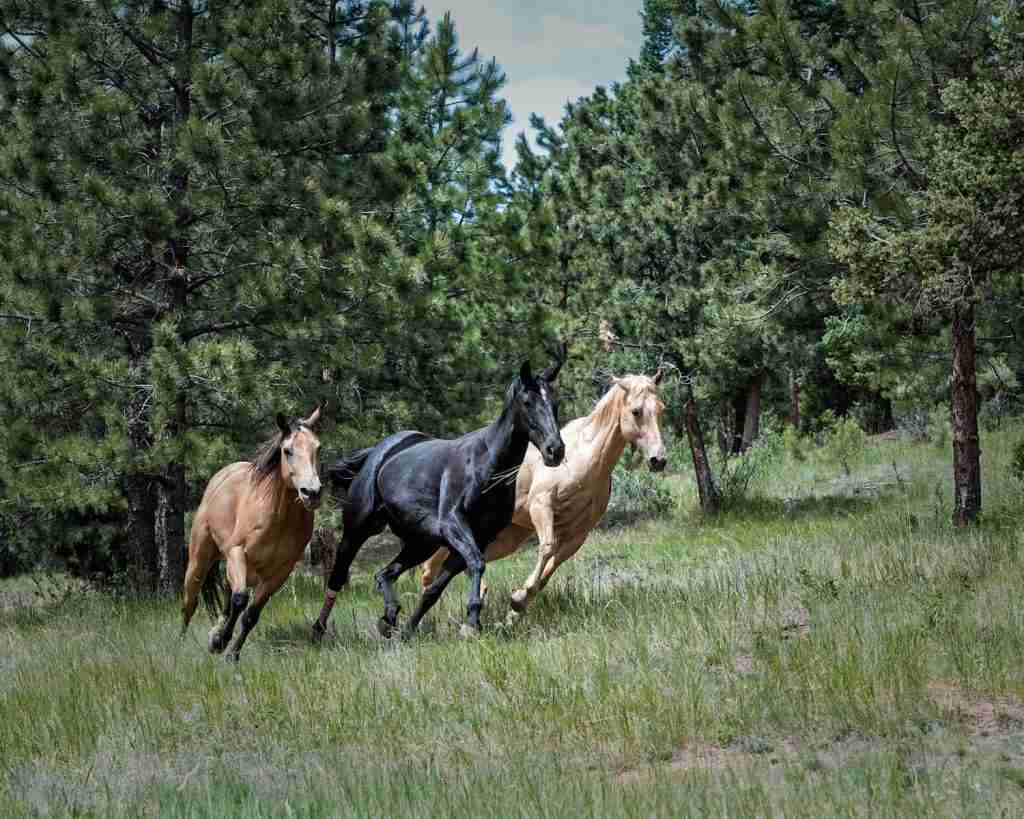
Horses are known for their stamina and strength. They can typically run for about 2 to 2.5 miles without taking a break.
This endurance makes them excellent for various activities including long-distance travel and competitions.
17. Horses produce approximately 10 gallons of saliva a day.
Horses produce a large amount of saliva each day, around 10 gallons. Saliva plays a key role in helping horses break down food, making it easier for them to swallow and digest.
It’s a crucial part of their eating process, ensuring the food moves smoothly through their digestive system.
18. Horses’ teeth never stop growing.
Horses have teeth that continuously grow. Continuous growth compensates for the wear and tear from chewing fibrous foods, helping them grind down their food effectively throughout their lives.
19. Horses can see nearly 360 degrees around them.
Horses have an almost 360-degree field of vision. Their eyes are positioned on the sides of their head, allowing them to see a vast area around them.
This wide vision helps them stay aware and alert to their surroundings.
20. A horse’s age can be estimated by examining its teeth.
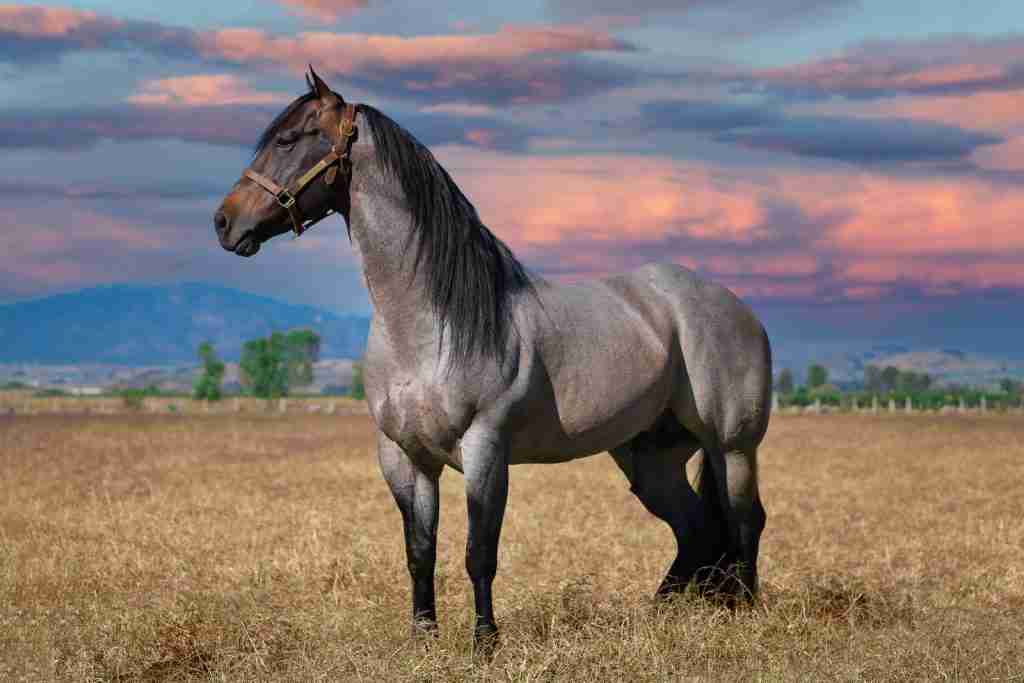
You can guess a horse’s age by looking at its teeth. The shape, length, and state of wear of a horse’s teeth provide clues about its age.
This method isn’t perfect, but it offers a good estimate for understanding a horse’s age.
21. Horses can sense a human’s mood and often mirror it.
Horses have a keen ability to pick up on human emotions. They can sense how a person is feeling and often reflect those feelings back.
This sensitivity allows for a deep connection between horses and humans. When you’re calm and gentle, a horse will likely respond in a similar manner.
22. Horses can only breathe through their noses.
Horses have a unique respiratory system that allows them to only breathe through their noses. This anatomical feature ensures a consistent and efficient flow of air, which is crucial for their high-energy activities and impressive stamina.
The design of their nasal passages and lungs prevents them from breathing through their mouths, safeguarding them from potential respiratory issues and ensuring optimal oxygen intake during both rest and exertion.
23. Horses can see better at night than humans.
Horses have exceptional night vision, better than humans. Their eyes are adapted to see in low light conditions, making it easier for them to navigate in the dark.
This ability is a holdover from their days as prey animals, where seeing at night was essential for survival.
24. Horses generally live for 25 to 30 years.
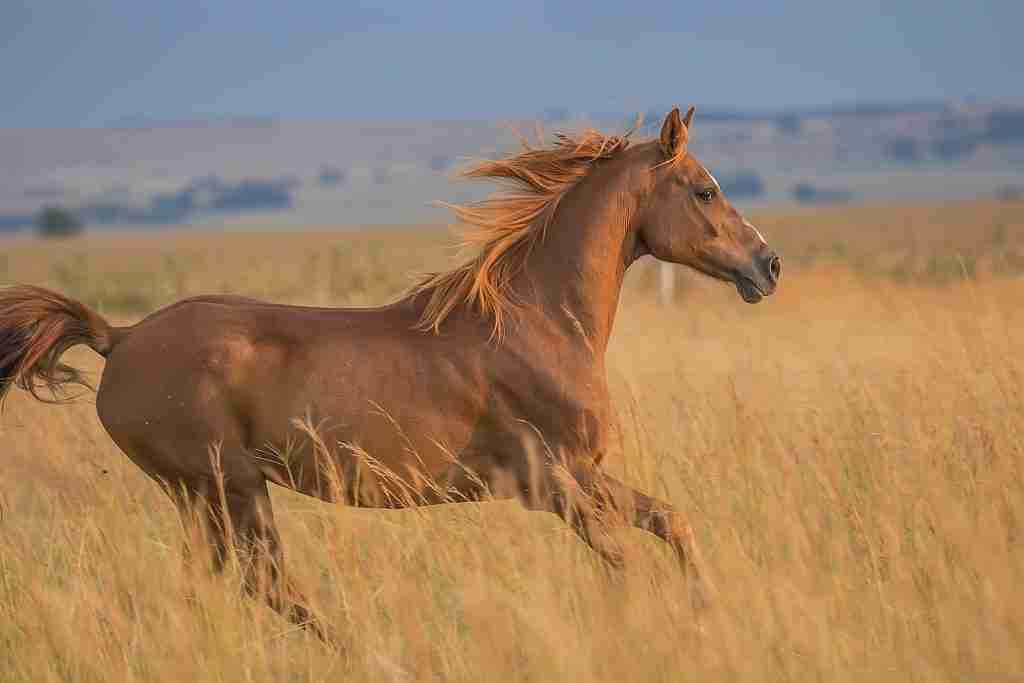
Horses typically have a lifespan of 25 to 30 years, a duration influenced by factors like breed, health, and care. Proper nutrition, regular veterinary checkups, and a comfortable environment play crucial roles in ensuring their longevity.
Exceptional care can sometimes enable horses to live into their 40s, showcasing their potential for a prolonged, healthy life.
25. There’s a breed known as the Bashkir Curly horse that has curly fur.
The Bashkir Curly horse stands out with its unique curly fur. This special breed, originating from Russia, has a distinctive coat that’s not just for looks.
The curly fur provides added insulation, helping the horse stay warm in chilly conditions, and making it a hearty and resilient breed, especially in colder climates.
FAQs
Yes, horses are generally good swimmers. They instinctively know how to swim and can move in water with a dog-paddle motion. However, not all horses enjoy water, and their swimming abilities can vary.
Thoroughbreds are primarily used for flat racing due to their speed and agility, while American Quarter Horses are popular for short-distance sprint racing, showcasing their powerful burst of speed over a quarter mile or less.
Thoroughbreds are renowned as the fastest horses, especially over distances of a mile or more, excelling in flat racing events. American Quarter Horses, on the other hand, hold the title for short-distance sprints, often racing a quarter mile or less at unmatched speeds.
Yes, horses were used in World War II. They served various roles including transportation of troops and equipment, cavalry charges, and other logistical purposes, despite the increasing use of mechanized military vehicles.
Horses need shoes to protect their hooves from wear and tear, provide traction, and distribute weight evenly, especially when they work on hard or uneven surfaces. Shoeing also helps in correcting hoof problems and providing support to the leg muscles and ligaments for performance horses.

